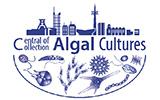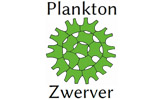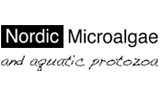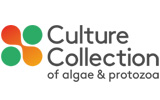Chara curta Nolte ex Kützing 1857

Current name:
Chara curta Nolte ex Kützing
Spine cells on encrusted cortex. Collected by Nick Stewart, Edenderry Canal, Ireland - 16 May 2018. C.F.Carter (chris.carter'at'6cvw.freeuk.com
Publication Details
Chara curta Nolte ex Kützing 1857: 22, pl. 53: fig. I
Published in: Kützing, F.T. (1857). Tabulae phycologicae; oder, Abbildungen der Tange. Vol. VII pp. i-ii, 1-40, 100 pls. Nordhausen: Gedruckt auf kosten des Verfassers (in commission bei W. Köhne).
Type Species
The type species (lectotype) of the genus Chara is Chara vulgaris Linnaeus.
Status of Name
This name is of an entity that is currently accepted taxonomically.
Type Information
Type locality: "Schleswig" [Germany]; (Kützing 1857: 22) Lectotype (Schallsee u. Wittbeck in Lauenburg [Germany]; designated by Wood in Wood & Imahori 1965: 205-206]: Nolte?; L; (Stewart 2024: 397) Notes: The type of Chara aspera var. crassior Kützing is the type of Chara curta Nolte ex Kützing (see Kützing 1849, 1957). Schaalsee, a lake, forms part of the border between Schleswig-Holstein (district Herzogtum Lauenburg) and Mecklenburg-Vorpommern (districts Ludwigslust-Parchim and Nordwestmecklenburg).
General Environment
This is a freshwater species.
Description
Plants 2-40 cm long, moderately to strongly encrusted. Cortex is triplostichous, tylacanthous. Spine cells in clusters 1-6, in pair or bunches of 3-4, as long as or much longer than the axe diameter, very dense and the plants get a spiny look. Branchlets short, shorter than the internodes
Habitat
Brackish-water and freshwater. Chara-lakes.
Key Characteristics
Similar to Chara aspera but spine-cells 2-5 together.
Similar Species
Chara aspera
Created: 11 April 2002 by M.D. Guiry.
Last updated: 09 January 2025
Verification of Data
Users are responsible for verifying the accuracy of information before use, as noted on the website Content page.
Nomenclatural note
Seemingly originally first introduced without a description, but validated by analytical figures (ICN Art. 38.7 "For the purpose of Art. 38.5, prior to 1 January 1908, an illustration with analysis (see Art. 38.9 and 38.10) is acceptable in place of a written description or diagnosis."). - (09 June 2015) - G.M. Guiry
Taxonomic note
This is the original Chara curta Nolte ex Kützing included the forms of C. aspera with spine cells in pairs or bunches as described in Migula (1897) and the species Chara desmacantha H. J. Groves. This is discussed by Langangen (2005).
- (25 September 2009)
Distributional note
Chara curta has been found in Norway, Sweden, Orkney, Ireland, England, Scotland (Moore & Green (1983), Langangen 2007). It is also reported from Spain Cirujano (ed)(2008). Migula (1897) report it from a few localities in Germany, but in Korsch et al.(2008) it is missing. "The distribution of this species is imperfectly known due to its treatment in some countries as a variety of Chara aspera and perhaps sometimes not distinguished at any level. It is most frequent in Ireland where it is locally frequent in the central limestone area and also scattered but less frequent in Britain (Bryant and Stewart, 2011). It also seems to be frequent in the Jura Mountains on the border of France and Switzerland (Bailly and Schaefer, 2010). Elsewhere there are scattered records from Sweden and Norway (Langangen, 2007), Germany (Arbeitsgruppe Characeen Deutschlands 2016 included under C. aspera), Austria (specimens seen), Italy (Bazzichelli and Abdelahad, 2009 illustrated as C. aspera), Spain (Cirujano et al., 2007, 2008 as C. aspera var. curta) and Morocco (Feldmann, 1953 fide Corillion 1957 as C. desmacantha)." (Stewart 2024). - (25 September 2009)
Conservational note
"A number of sites have been completely lost due to eutrophication (e.g., Stewart, 2001) and this is the most widespread threat. Because of its preference for shallower water, it is less vulnerable to increased turbidity but the zone where it occurs is more vulnerable to smothering by filamentous algae, increased vascular plant competition and substrate change (i.e. becoming softer and more organic due to algal deposition). See also under "Nutrient conditions" for chemical details. In the deeper water of vascular plant dominated lakes Chara curta is often constrained by the vascular plant communities. This is particularly an issue with spreading introduced species such as Elodea nuttallii where deep water communi-ties can be very dense and large detached rafts can accumulate in the shallows where the Chara curta is growing. There is evidence at some sites that Elodea species have significantly reduced the extent of, and even excluded, Chara curta communities. In gravel pits, this species is particularly associated with younger pits and in older sites it is frequently pushed out by a combination of marginal swamp development and overshading by trees. In smaller sites, such as ponds, there is often an issue of increased competition from swamp and vascular plants due to successional changes. Periodic clearance or other disturbance may be necessary to maintain open conditions." (Stewart 2024). - (09 January 2025) - M.D. Guiry
Linking to this page: https://www.algaebase.org/search/species/detail/?species_id=35579
Citing AlgaeBase
Cite this record as:
M.D. Guiry in Guiry, M.D. & Guiry, G.M. 09 January 2025. AlgaeBase. World-wide electronic publication, National University of Ireland, Galway. https://www.algaebase.org; searched on 08 June 2025
 Request PDF
Request PDF














